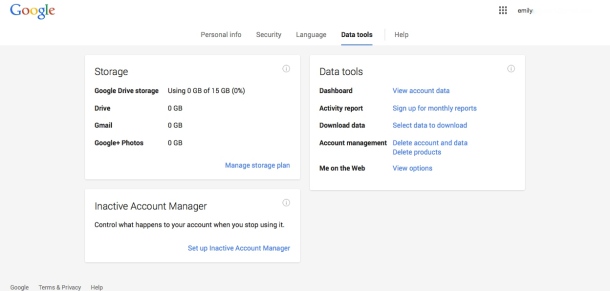 I’ve been speaking with a variety of researchers on the legal aspects around our digital accounts and what happens to them after we die. Often the discussion focuses on who is entitled to access a deceased person’s online account data – such as email, photos or documents – and the consensus is that it’s complicated.
I’ve been speaking with a variety of researchers on the legal aspects around our digital accounts and what happens to them after we die. Often the discussion focuses on who is entitled to access a deceased person’s online account data – such as email, photos or documents – and the consensus is that it’s complicated.
Some platforms such as Google have started to allow users to nominate next of kin, family or friends to receive their personal information once their account becomes inactive. With the Uniform Fiduciary Access to Digital Assets Act approved in the US (July 2014), we may see a system where a personal representative of a deceased person’s estate has as much right to manage the digital assets of the deceased in the same way they would their tangible assets. Currently ownership of digital assets often remain with online services such as Facebook and Yahoo unless contested through the legal system by a next of kin.
While laws are catching up with digital and social technologies, Damian McCallig, a PhD candidate from the School of Law at National University of Ireland in Galway is curious to know what will happen to our data a generation or more after we die.
As he points out, current copyright laws in countries like the UK and Australia allow someone’s personal information to become available in the public domain several years after that individual has died. Records around births, deaths and marriages are accessible by researchers or family members interested in their genealogy or a previous generation’s history. Unpublished works such as diaries or letters can be published without the permission of their estate, as long as a certain period of time has passed since the author died. In the UK, this is seventy years, although there are specific exemptions.
“Currently a lot of today’s information that is relevant for the researchers and historians of the future is behind walls and owned by companies,” says McCallig. “For instance, Barack Obama has a Twitter account which will hold public tweets but also private messages which are gated. This information will be relevant from a historical and research point of view. Previously these kinds of notes would have become available after a set period of time. What copyright laws apply to this digital data managed by private organisations?”
McCallig believes that Facebook would have been alerted to the opportunity around its memorialised accounts (what is Facebook memorialisation?) when a father campaigned for a ‘look back’ video to be made for his son who died in 2012, attracting widespread support. He wonders if Facebook is assessing the commercial potential for its deceased accounts in the long term. Facebook’s main revenue stream comes from advertising, based on driving eyeballs to ad creative and sponsored posts. Memorialised Facebook accounts offer no value to marketers or monetisation options for the company in its current model.
While he’s not certain on how Facebook would commercialise these accounts, likely scenarios could include charging researchers, educational institutions, public information bodies and even individuals for access to archival information.
“Facebook is able to provide insights on how communities reacted to news and events within specific contexts or a particular point in time. It can detail emotional responses as well as online behaviour across timelines and networks,” says McCallig. “That’s of tremendous value to future historians.”
If this is the case, should these historical insights and archives be available freely to the public or remain in the hands of commercial companies? And if Facebook fails to survive, should there be a contingency plan to protect and share our histories with future generations?
What do you think?
Read more about Damian McCallig’s perspectives on Digital Remains or connect with him on Twitter.








